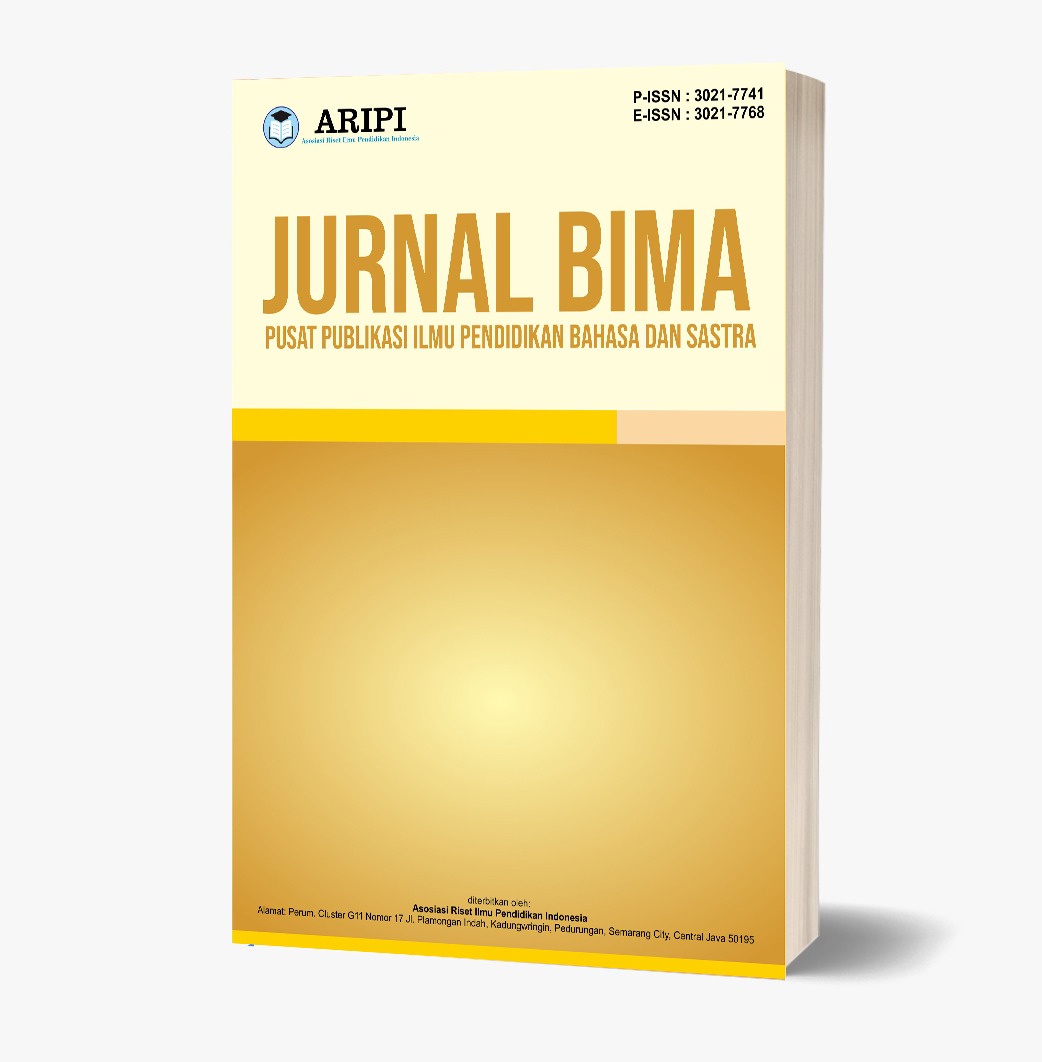Pengaruh Penggunaan Kompos Limbah Teh PT. Gunung Slamat Slawi, Terhadap Pertumbuhan Tanamanan Packcoy (Brassica Rapa L.) Dan Kangkung (Ipmoea Aquatic)
DOI:
https://doi.org/10.61132/bima.v1i3.198Keywords:
Tea Waste, Packcoy and Water Spinach Plants, Effect of Tea Waste ComposAbstract
This research aims to determine (1) the effect of using tea waste compost fertilizer on the growth of packcoy plants, (2) the effect of using tea waste compost fertilizer on the growth of water spinach plants (Ipomea Aquatic), and (3) comparing the effectiveness of tea waste compost fertilizer in cultivating water spinach. and packcoy. The research was carried out from March to May 2023 on the land of PT. Mount Slamat, Slawi. This research used a Completely Randomized Design (CRD) with 4 treatments and 3 repetitions, each treatment namely K0 (control), K1 (150 g), K2 (350 g) and K3 (450 g). The parameters of this research are plant height, number of leaves, and plant weight when the plants are 30 days after planting. The data were analyzed using analysis of variance (ANOVA). The results of the research show that (1) The effect of tea waste compost fertilizer on the growth of packcoy plants has a real influence on the growth of plant height, number of leaves and weight of packcoy plants. K2 treatment with a dose (350 g) showed the best results for average plant height (24.1 cm), number of leaves (17 pieces) and plant weight (29.6 grams). (2) The effect of tea waste compost fertilizer on the growth of kale plants has a significant effect on the growth of plant height, number of leaves and weight of kale plants. K2 treatment with a dose (350 g) showed the best results for average plant height (58.6 cm), number of leaves (50.3 pieces) and plant weight (44.5 grams). (3) Comparing the effectiveness of tea waste compost fertilizer in cultivating water spinach and packcoy varies depending on various factors, including the composition of tea waste, growing conditions, and plant nutritional needs.
Downloads
References
Abidin. 2015. Pengaruh perlakuan kombinasi media terhadap pertumbuhan sawi pakchoy (Brassica rapa L.). Jurnal Silvikultur Tropika. 3 (2) : 81-84.
Amalia, D. dan Widiyaningrum, P. 2016. Penggunaan EM4 dan MOL limbah tomat sebagai bioaktivator pada pembuatan kompos. Life Science 5 (1): 18-24
Amalia, D. dan Widiyaningrum, P. 2016. Penggunaan EM4 dan MOL limbah tomat sebagai bioaktivator pada pembuatan kompos. Life Science 5 (1): 18-24
Azizah, N., G. Haryono dan Tujiyanta. 2016. Respon macam pupuk organik macam mulsa terhadap hasil tanaman sawi hijau (Brassica juncea L.) var. tosakan. Vigor Jurnal Ilmu Pertanian Tropika dan Subtropika. 1 (1) : 44
Edy Soedarmanto, 2019. Pupuk-Kompos-/
Ipomea reptans poir) dengan Pemberian Pupuk Organik Cair (POC) Berbahan Dasar Sabut Kelapa dan Limbah Cair Tahu. Skripsi Universitas Muhammadiyah Surakart
Muliawati, E. S. 2001. Kajian Tingkat Serapan Hara, Pertumbuhan dan Produksi Sambiloto (Androgaphis Paniculata Ness.) pada Beberapa Komposisi Media Tanam dan Tingkat Pengairan. Prosiding Simposium Nasional II Tumbuhan Obat dan Aromatik. APINMAP. Bogor, 8-10 Agustus 2001
Muningsih, R. dan Ciptadi, G. 2018. Analisis kandungan unsur hara limbah cair teh hijau sebagai bahan pupuk organik pada bibit teh. Mediagro. 14 (1) : 25-32.
Muningsih, R. dan Susilawardani. 2015. Pengaruh Penggunaan Biofertilizer Untuk Meningkatkan Kesehatan Tanaman dan Pemecahan Pucuk Dorman pada Bibit Teh di PT Tambi. Agro-UPY, Volume 7. No. 1, September 2015. Fakultas Agroteknologi, Universitas PGRI, Yogyakarta. ISSN : 1978-2276
Purwadi, W. (2017). Pertumbuhan dan Kadar Protein pada Tanaman Kangkung Darat
Sejarah PT Sinar Sosro,. 2015. http://www.sosro.com/ 27 September.
Supriyanto dan Fidryaningsih. 2010. Pemanfaatan Arang Sekam untuk Memperbaiki Pertumbuhan Semai Jabon (Anthocephalus cadamba (Roxb.) Miq) pada Media Subsoil. Jurnal SILVIKULTUR TROPIKA Vol. 01 No. 01 Desember 2010, Hal. 24 –28. ISSN: 2086-8227.
Yuwono, D., 2005, Kompos, Penebar Swadaya, Jakartav
Downloads
Published
How to Cite
Issue
Section
License
Copyright (c) 2023 Jurnal Bima : Pusat Publikasi Ilmu Pendidikan bahasa dan Sastra

This work is licensed under a Creative Commons Attribution-ShareAlike 4.0 International License.






